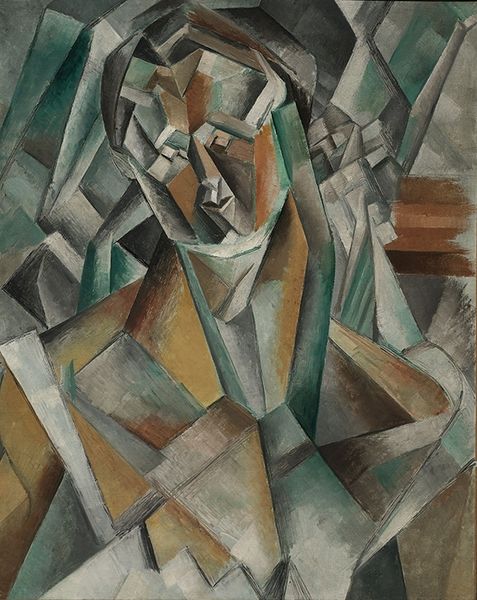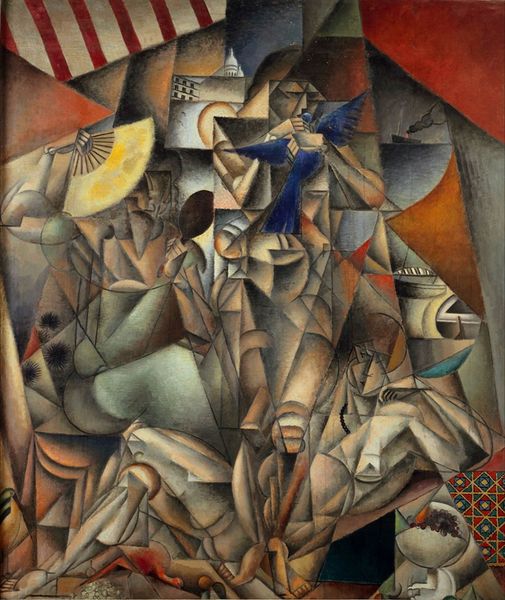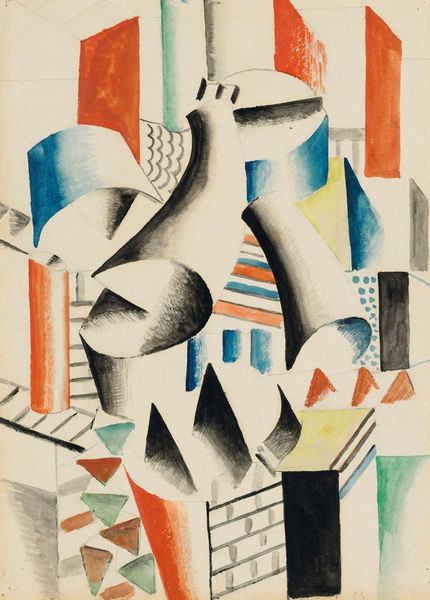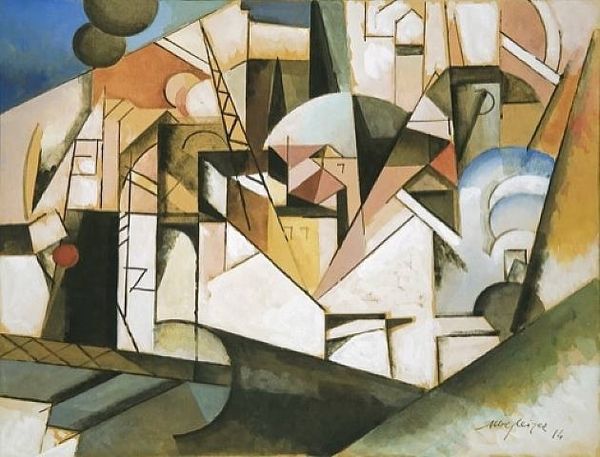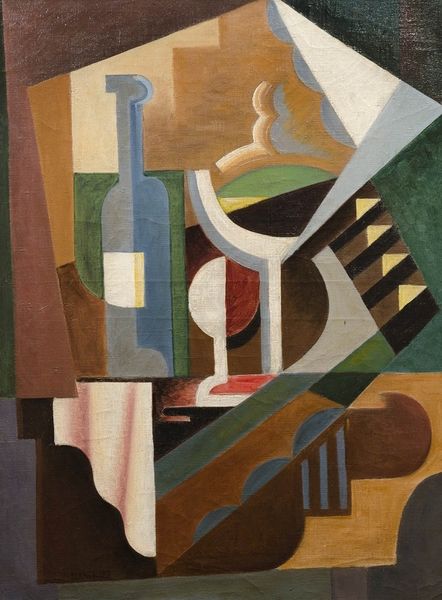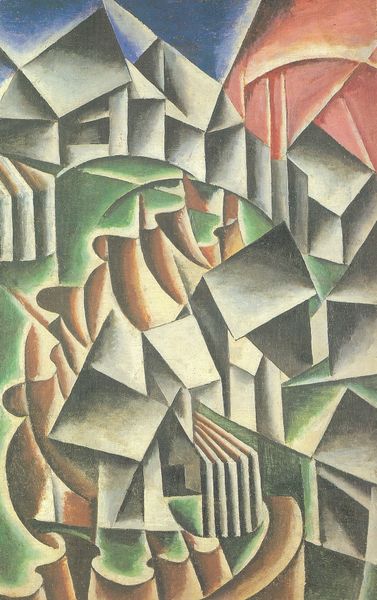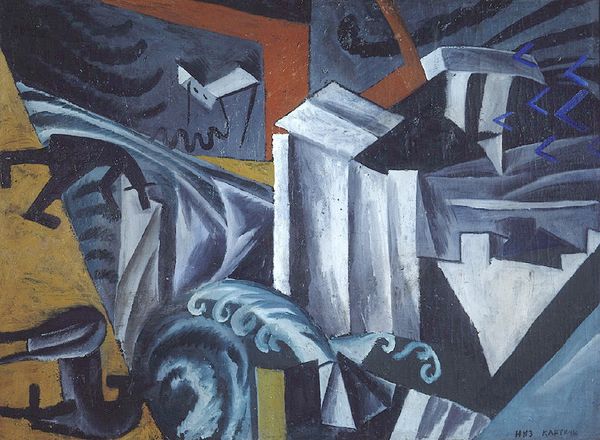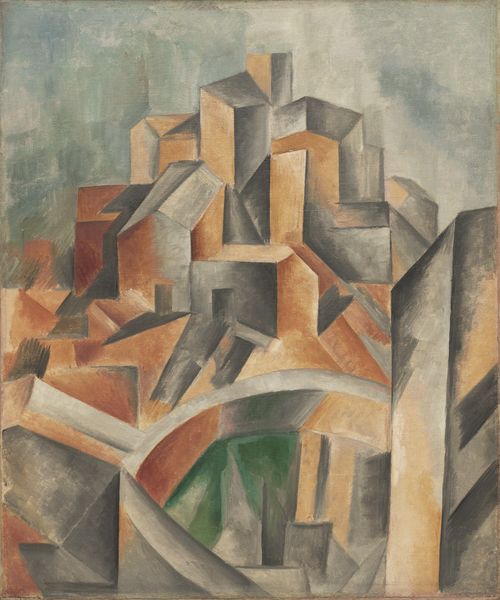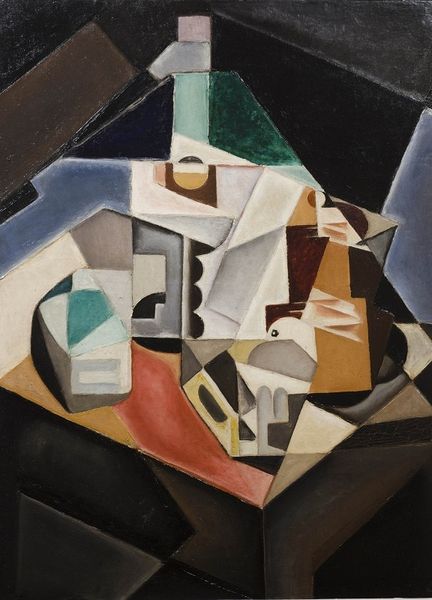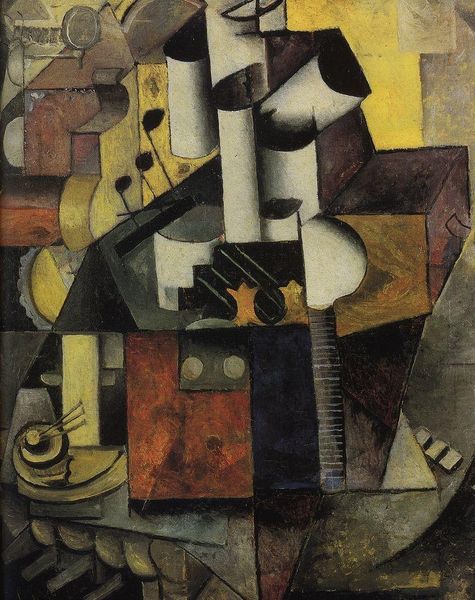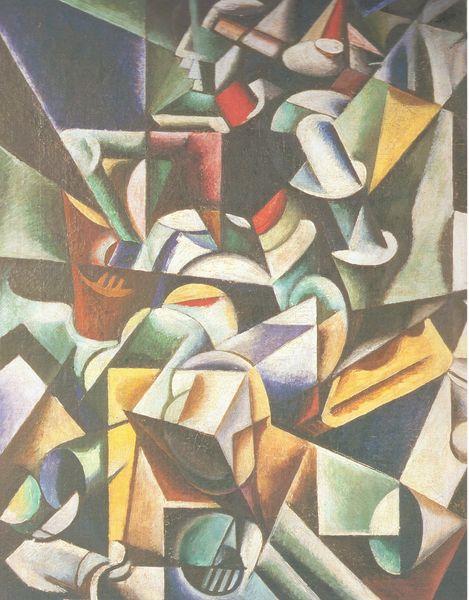
painting, oil-paint
#
cubism
#
painting
#
oil-paint
#
oil painting
#
geometric
#
cityscape
#
modernism
Dimensions: overall: 92 x 76.9 cm (36 1/4 x 30 1/4 in.) framed: 111.7 x 95.9 cm (44 x 37 3/4 in.)
Copyright: National Gallery of Art: CC0 1.0
Curator: Here we have Max Weber’s 1915 oil painting, "Rush Hour, New York". Editor: It’s like looking into a kaleidoscope, all fragmented and…intense. I feel a nervous energy radiating from the canvas. The geometric forms seem to be pushing and pulling against each other. Curator: Precisely. Weber, deeply influenced by Cubism and Modernism, was exploring ways to visually represent the dynamism and cacophony of modern urban life. The early 20th century witnessed an unprecedented surge in urban populations and industrial activity, particularly in cities like New York. Editor: So the painting isn’t just a depiction of a busy street, but a comment on the psychological impact of that rapid urbanization? The disorienting, almost overwhelming nature of modern existence? Curator: Absolutely. If we situate Weber's work within its historical context, the influx of immigrants, the rise of consumer culture, and the anxieties surrounding social change were major concerns. Weber, himself an immigrant, channels those multifaceted energies into a dynamic composition. Editor: The use of geometry is really striking. It abstracts the human form and architecture to a point where they almost become interchangeable. The buildings and bodies seem to meld, like cogs in the machine of city life. Do you think that the fractured shapes evoke alienation and anonymity within an environment, reflecting what it meant to lose yourself in the crowd? Curator: He seeks not to condemn the masses in transit. Rather, this painting showcases an artistic engagement and exploration into the complexities of modernity's effects upon everyday lives. It is important to consider how "Rush Hour, New York" reflects broader trends of social commentary prevalent at this time. Editor: I see. So, it's a more nuanced perspective. I’m left contemplating both the anxieties and excitements of a world transforming. Curator: Indeed, examining Weber’s painting today serves to open a necessary reflection on how those trends may continue to this day.
Comments
No comments
Be the first to comment and join the conversation on the ultimate creative platform.
